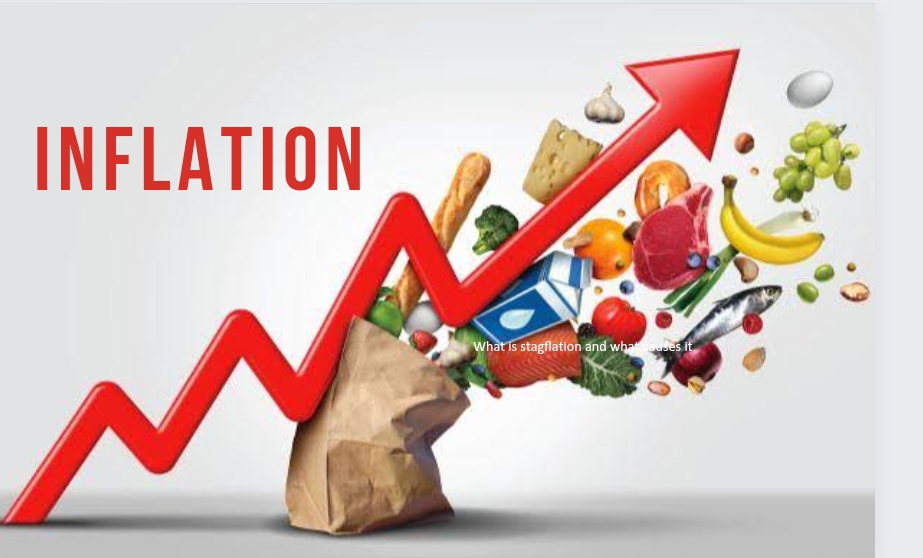Inflation is a concept that affects the purchasing power of money and plays a significant role in shaping economies worldwide. It refers to the sustained increase in the general price level of goods and services over a specific period. The inflation rate measures the percentage change in price levels between two time periods, typically on an annual basis. In this article, we will delve into the causes, impacts, and economic significance of inflation rate.
Inflation rate refers to the percentage change in the general price level of goods and services in an economy over a specific period. In the context of the Nigerian economy, understanding the causes, impacts, and economic significance of inflation rate is crucial for policymakers and citizens alike. Several factors contribute to inflation, including excess demand, supply shocks, and changes in production costs. High inflation can erode purchasing power, reduce the standard of living, and lead to income disparities, especially for low-income groups.
On the other hand, a moderate and controlled inflation rate can incentivize spending and investment, fostering economic growth. Managing inflation is a key challenge for Nigeria’s policymakers, who must strike a delicate balance to promote stability and sustainable economic development while safeguarding the welfare of their citizens.
Causes of Inflation:
Inflation can arise from various factors, and economists often distinguish between demand-pull and cost-push inflation.
1. Demand-Pull Inflation:
Demand-pull inflation occurs when aggregate demand in an economy surpasses the aggregate supply of goods and services. This situation typically arises during periods of strong economic growth, increased consumer spending, or excessive government spending. When demand outstrips supply, sellers can raise prices to capitalize on higher demand, leading to an increase in the overall price level.
2. Cost-Push Inflation:
Cost-push inflation, on the other hand, is caused by rising production costs, such as wages, raw materials, or energy prices. When businesses face higher input costs, they may pass these expenses onto consumers in the form of higher prices for goods and services. Factors like supply chain disruptions, geopolitical events, or natural disasters can trigger cost-push inflation.
Impacts of Inflation:
Inflation can have both positive and negative effects on an economy, depending on its magnitude and persistence.
1. Purchasing Power Erosion:
One of the most significant impacts of inflation is the erosion of purchasing power. As prices rise, each unit of currency buys fewer goods and services, reducing the real value of money. Consumers may find that their incomes do not keep up with rising prices, leading to a decrease in their purchasing power and a decline in their standard of living.
2. Uncertainty and Investment:
High or unpredictable inflation rates can create uncertainty in the economy. Businesses may be hesitant to invest or expand when they are unsure of future price levels, which can hamper economic growth. Additionally, lenders and borrowers may face challenges in predicting interest rates and the real value of debt obligations.
3. Wage-Price Spiral:
Inflation can trigger a wage-price spiral, where workers demand higher wages to keep up with the increasing cost of living. As wages rise, production costs for businesses increase, leading to further price hikes, perpetuating the cycle of inflation.
4. Redistribution of Wealth:
Inflation can redistribute wealth among different groups in society. Debtors may benefit from inflation as the real value of their debt decreases over time, while savers and fixed-income earners may see a decline in the purchasing power of their savings.
Economic Significance of Inflation Rate:
Central banks and policymakers closely monitor inflation rates and aim to maintain a stable and moderate level of inflation. A low and stable inflation rate is generally considered beneficial for economic growth and stability.
1. Price Stability:
Central banks typically target an inflation rate within a specific range to ensure price stability. Moderate inflation can encourage consumer spending and investment, while high or hyperinflation can lead to economic instability and undermine confidence in the currency.
2. Monetary Policy:
Central banks use monetary policy tools, such as interest rates and open market operations, to influence inflation rates. By adjusting these tools, they seek to achieve their inflation targets and support overall economic objectives.
3. Employment and Growth:
A stable inflation rate can promote economic growth and employment. Moderate inflation provides an incentive for consumers to spend and invest, which can stimulate demand and create job opportunities.
Inflation rate is a crucial economic indicator that measures the rate of change in price levels over time. It is influenced by a combination of demand and supply factors and has significant impacts on consumers, businesses, and the overall economy. Maintaining a stable and moderate inflation rate is a key goal for central banks and policymakers as they strive to support sustainable economic growth and financial stability.














